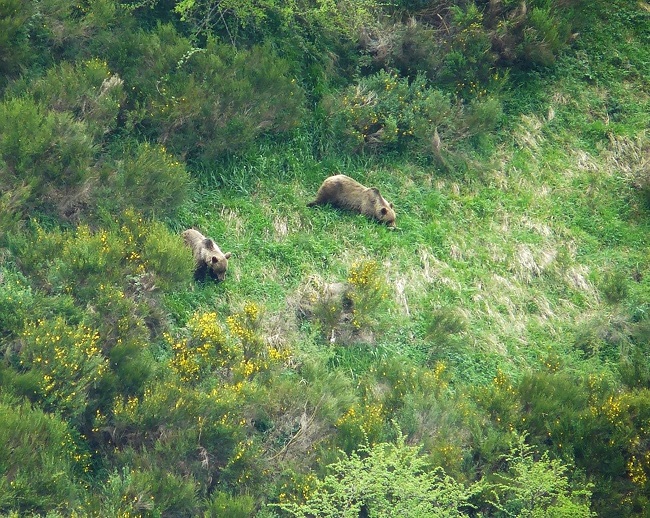Researchers at the EBD-CSIC relate the trend to the change of characteristics of the territory occupied by the bears.
The study points to the need to adapt management tools for the conservation of the new distribution area of the population of this endangered species.
A research team from the Doñana Biological Station (EBD-CSIC) has explained the change in the distribution range of the Cantabrian brown bear population from the 1980s to the present day as a response to the characteristics of the territory. After going through a period of reduction, in recent years there has been a period of expansion, reaching today about 17,000 km2 of territory.
Comparing the first period analysed (1982-1992) with the second (1993-2002), a reduction in the distribution of brown bears was observed in the area. This period coincides with the minimum number of individuals, also reported by other studies, coinciding with the smallest distribution area known. However, when the first period was compared with the third (2003-2012) and fourth period (2013-2021), the trend changes and a clear expansion of the population is observed.
According to the study, the current expansion could be related with the conservation efforts to protect the species through recovery plans that the governments of Cantabria, Castilla y León, Asturias and Galicia developed during the 1990s. The increase in the number of individuals apparently translates into an increase in the distribution area, which, according to the results, is towards those available areas that have a less humanised habitat and are close to the nuclei of the bear population.
"The area delimited in the recovery plans for the species only covers about 50% of the current range. This highlights the importance of dynamically updating these management tools to adapt them to a population that is currently expanding," says Manuel Díaz-Fernández, researcher at the EBD-CSIC and lead author of the study. "It is possible that in those areas outside the area delimited by the plans, fewer resources and personnel are being allocated to population monitoring, habitat improvements or even prevention and satisfactory compensation for possible damage caused by the species to human property such as beehives, livestock or crops," he adds.
Breeding areas have note changed
The researchers have observed that while the area with presence of brown bear individuals has increased considerably from the 1990s, the area with presence of bears with cubs has remained stable over time. "This information opens up new research goals and, from the point of view of conservation, makes us cautious about the future of the population, which is still considered to be in danger of extinction," says Díaz-Fernández. The scientist points out that it would be interesting to analyse other aspects such as the survival of individuals that disperse outside the areas delimited by the recovery plans.
Reference: Manuel Díaz-Fernández, Javier Naves y Eloy Revilla. 2023. Conservation implications of range dynamics in endangered populations: An example with brown bears. Conservation Science and Practice. DOI: 10.1111/csp2.12894
PRESS RELEASE (Spanish)









 Las altas temperaturas están provocando que las lagunas y las marismas de Doñana pierdan agua rápidamente
Las altas temperaturas están provocando que las lagunas y las marismas de Doñana pierdan agua rápidamente



